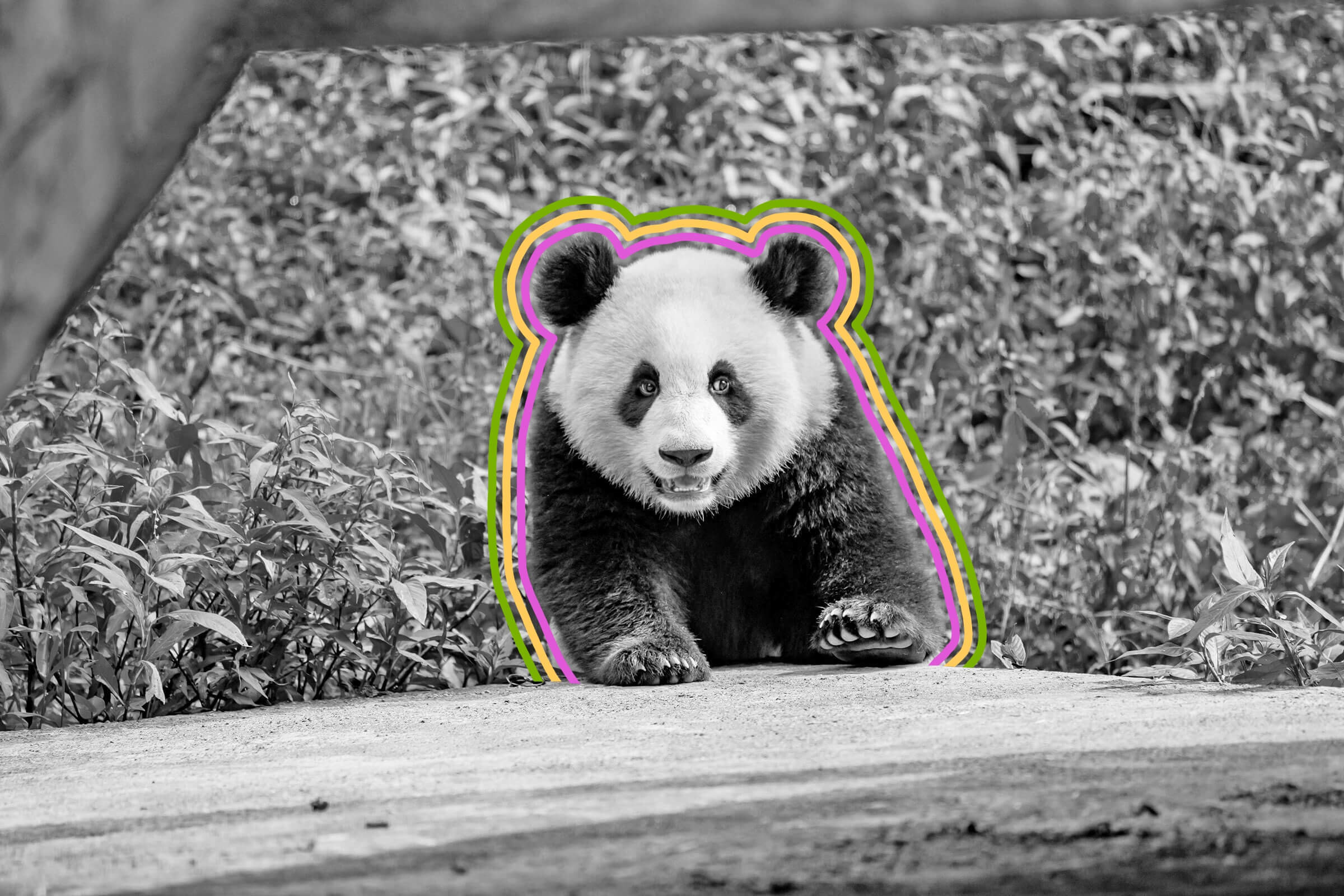

They are the national animal of China, the official symbol of the World Wildlife Federation, and downright adorable with the way they sit on their haunches, munching bamboo. But that’s just scratching the surface when it comes to telling the story of giant pandas. Are they real bears? What are their babies like? And what kind of sounds do they make? Read on to learn those answers and more about these iconic creatures.
Their Coloring May Aid With Camouflage and Communication

While giant pandas are known for their telltale black-and-white fur, the significance of this coloring has largely eluded scientists over the years. However, a recent study suggests that this pattern provides camouflage for contrasting environments, with the white helping the bears blend into snowy backgrounds and the black providing extra cover amid forest shadows. Furthermore, the black ears and eyes might be meant to make the animals look more ferocious. Plus, those black patches around the eyes — which vary in size and shape — may help pandas recognize one another in the wild.
A Giant Panda First Appeared in the U.S. in 1936

The first giant panda to arrive safely in the U.S. came via New York dress designer and socialite Ruth Harkness in 1936. With help from Chinese American guide Quentin Young, Harkness trekked to the mountains of central China, found an abandoned baby panda, nursed it with powdered milk on the way back to Shanghai, and managed to get it classified as a dog for legal passage out of the country. Named Su Lin, the panda became a popular attraction at Chicago's Brookfield Zoo, and opened the door for other opportunity-seekers to venture to China to get their hands on one of these creatures. The Chinese government cracked down on such attempts by 1946, before beginning a trend the following decade of giving pandas as acts of strategic diplomacy.
Pandas Have Difficulty Digesting the Main Part of Their Diet

Giant pandas subsist almost entirely on bamboo, although they'll occasionally dine on other plants and small animals. However, in a cruel twist of evolutionary fate, they lack the gut microbes needed to break down vegetation, so they can digest only about 17% of the food they regularly consume. That means pandas need to eat enormous quantities of bamboo — about 26 to 83 pounds daily — to get enough nutrients to fuel their systems. It also means they need to use the bathroom frequently, and may defecate around 40 times a day.
Pandas Use a "False Thumb" to Hold Bamboo

When it comes to chowing down on all that bamboo, giant pandas are aided by the presence of a "false thumb," an elongated wrist bone that helps them grab and hold these vital shoots. Strangely, the examination of an ancestral panda’s fossil revealed that these predecessors possessed longer and straighter wrist bones, which would render the gripping task even easier. So why the seeming biological regression? Scientists believe that the bone’s current size and shape best serves the dual functions of the wrist, which also needs to support the weight of a 250-pound animal as it walks on all four legs.
Baby Pandas Are Tiny and Helpless

In contrast with lumbering black-and-white adult pandas, baby pandas are hairless, pink, blind, and tiny; weighing between 3 and 5 ounces, they're approximately the size of a stick of butter and 1/900 the size of their mothers. Because their newborns are so helpless, mothers will forgo food for the first few weeks to focus on nursing and warming their offspring. Young pandas finally start to seek out independence at around 5 months of age, and are ready to strike out on their own at about 1 1/2 to 2 years old.
Giant Pandas Are No Longer "Endangered"

Once common across south and eastern China and into Myanmar and northern Vietnam, wild giant pandas are now found solely in high-altitude areas of China’s Sichuan, Shaanxi, and Gansu provinces, their existence threatened by illegal hunting and low birth rates. Fortunately, conservation efforts have helped preserve the population of these beloved creatures, which saw their status upgraded from "endangered" to "vulnerable" by the International Union for Conservation of Nature in September 2016. Recent estimates place the number of wild pandas at 1,864, with another 600 residing in zoos and breeding facilities.
They Make at Least 13 Different Noises

Largely solitary and quiet in the wild, giant pandas have been recorded emitting 13 unique vocalizations while in captivity. One of their most distinctive noises is a bleat, which can come when they're hungry, calling to neighbors, and especially when in heat. Females may also chirp like a bird when anxious about their babies, or bark when a stranger gets too close to the little ones. Other panda sounds include honks, hiccups, grunts, and squeaks.
Giant Pandas Are Not Closely Related to Red Pandas

They're both native to China, eat a bamboo-heavy diet, and enjoy the use of that elongated wrist bone. Because of those overlapping characteristics, the giant panda was partly named after the red panda, which had been classified nearly a half-century earlier, in 1825. But while they share an extinct ancestor, red pandas are the only living members of the Ailuridae family. Giant pandas, on the other hand, belong to the Ursidae family, making them true bears.
Giant Pandas Will Do Handstands

Male giant pandas are known to hoist themselves into a handstand, an action sure to please witnesses until they realize that the bears are attempting to urinate and rub anal secretions on trees. Of course, there are important biological reasons for this behavior. These markings leave a scent, helping females find an appropriate mate during a short window for conception that lasts only about one to three days every year. Additionally, because they struggle to get enough nutrition from their bamboo diets, it's believed that pandas use the scents to limit confrontation between competing males and thereby conserve energy.
